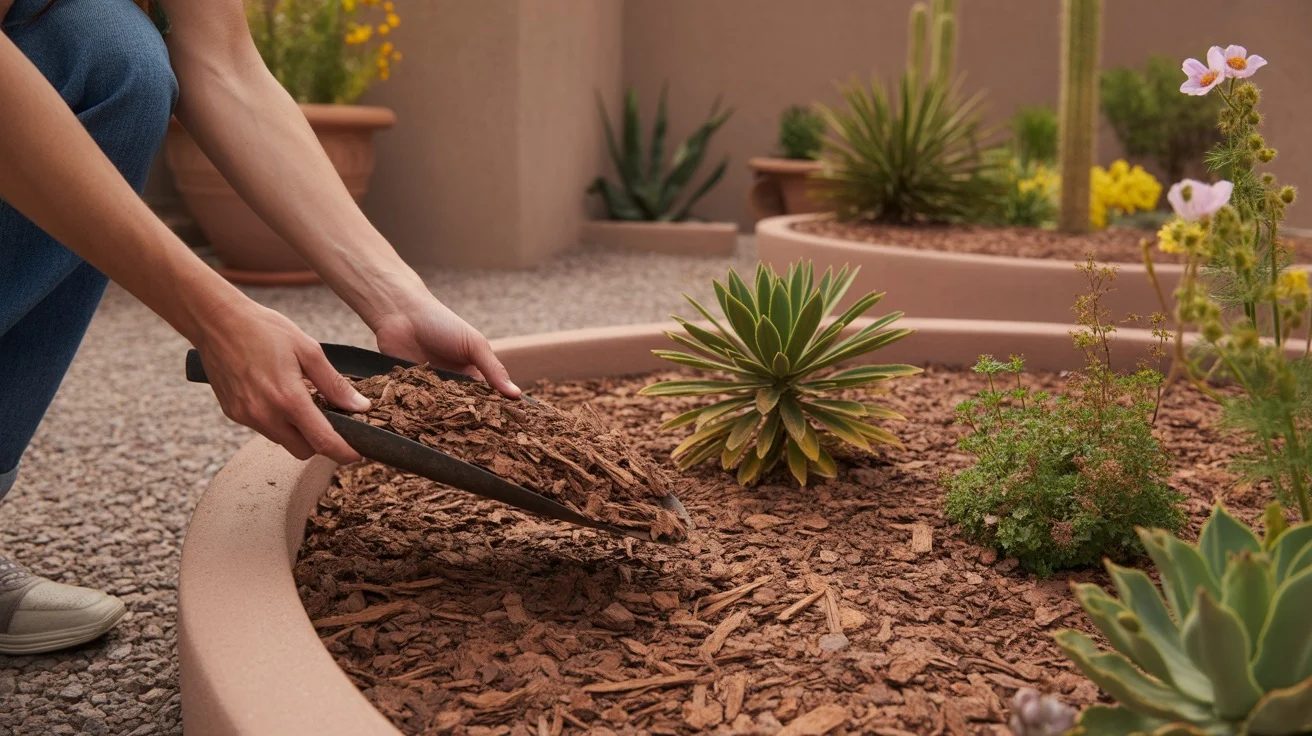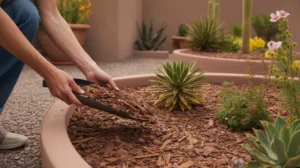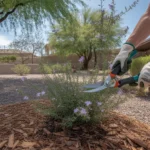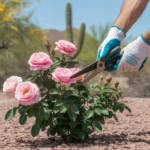As the spring season arrives in Mesa, savvy desert gardeners know that mulching in March is key to achieving the perfect moisture balance for their plants. With our dry climate and intense sun, retaining soil moisture is essential for a thriving garden. Let’s explore some expert tips for effective mulching this month.

Why Mulch Matters in Mesa
Mulching serves several crucial purposes in desert landscapes. First and foremost, it helps retain precious moisture in the soil, reducing evaporation and keeping plant roots hydrated. Mulch also moderates soil temperature, preventing extreme fluctuations that can stress plants.
In addition, a layer of organic mulch gradually breaks down over time, enriching the soil with nutrients. This is especially beneficial in our alkaline desert soils that can be lacking in organic matter. Mulch also suppresses weed growth, minimizing competition for water and nutrients.
Choosing the Right Mulch Material
When selecting mulch for your Mesa garden, opt for organic materials that will decompose and nourish the soil. Some excellent choices include shredded bark, wood chips, straw, and compost. Avoid inorganic mulches like rocks or gravel, as they can trap heat and increase soil temperature.
For a polished look, many local gardeners prefer finely shredded bark mulch in a natural brown hue. This type of mulch breaks down slowly, providing long-lasting benefits. If you have trees that drop leaves, consider using them as mulch by running over them with a lawn mower to create a nutrient-rich leaf mold.
Applying Mulch Like a Pro
Before laying down mulch, thoroughly water your garden beds to ensure the soil is moist. Then, apply a 3-4 inch layer of mulch around plants, taking care not to pile it against stems or trunks. Leave a small gap to prevent rot and disease.
As you mulch, aim for an even depth throughout the bed. Use a rake to smooth out the surface and create a tidy appearance. If you have drip irrigation or soaker hoses, make sure they are positioned beneath the mulch layer for optimal efficiency.
Remember to replenish your mulch as needed throughout the growing season. As it breaks down, top off the layer to maintain that ideal 3-4 inch depth. Your plants will thank you with healthier growth and increased resilience to our tough desert conditions.
Moisture-Balancing Companions for Mulch
In addition to mulching, consider incorporating moisture-retaining soil amendments like compost or coconut coir. These materials help improve soil structure and water-holding capacity, further optimizing moisture balance.
Pairing mulch with low-water flowers and desert-adapted plants is another smart strategy. Species like penstemon, desert marigold, and globe mallow thrive in our arid climate and require minimal irrigation once established. By selecting water-wise plants and mulching diligently, you’ll create a garden that’s both beautiful and sustainable.
As you embark on your March mulching mission, remember that proper fertilizer timing and spring garden cleanup are also key components of a healthy desert landscape. With a little effort and know-how, you’ll be rewarded with a lush, moisture-balanced oasis that’s the envy of the neighborhood.











